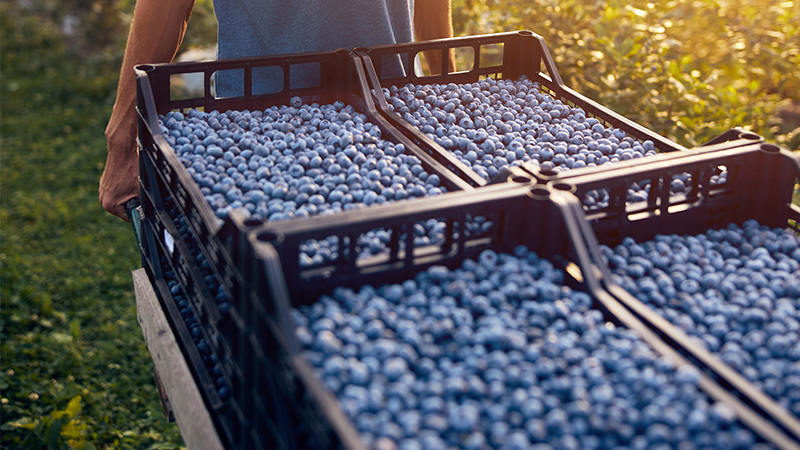U.S. Blueberries Gain More Access to Key Asian Markets
Among the new tenets of the trade agreement agreed to earlier this summer is expanded market access for fresh U.S. highbush blueberries. Previously, China only permitted imports of dried and frozen U.S. highbush blueberries. Additionally, the Philippines will formally open its market to fresh U.S. highbush blueberries, making the U.S. the only country with official access to the Philippine market for fresh blueberries.
It was excellent timing, says Alicia M. Adler, Vice President of the North American Blueberry Council (NABC), as it came just in time for the current peak shipping season. “It’s really a unique time for U.S. berry industry to have these two markets open up within weeks of each other,” she says. “It’s just unfortunate it happened in the middle of a global pandemic, as our farms are dealing with so much right now.”
China
The Chinese market represents a significant opportunity for the U.S. highbush blueberry industry, as an increasing number of Chinese consumers prefer imported fruits due to their superior taste, nutrition, and appearance. From 2014 to 2018, the volume of per capita fresh blueberry consumption in China increased by more than 400%.
Among the key updates to the Phase 1 trade agreement is that fresh blueberries must be commercially produced from the states of California, Florida, Georgia, Indiana, Louisiana, Michigan, Mississippi, New Jersey, North Carolina, Oregon, and Washington. Also, blueberries must come from packinghouses registered and approved by USDA, and the registered packinghouses must have a system to ensure all fruit can be traced back to the supplying orchards.
Philippines
The U.S. has been providing fresh highbush blueberries to the Philippine market, but only in an intermittent capacity, with sales limited to hotels, restaurants, and high-end supermarkets.
With official access to this vibrant market, the sales growth potential is significant. The USDA reports that annual U.S. sales have averaged $150,000 over the last five years, but trade experts project sales could reach $500,000 this season, and as much as $1 million annually in the future.
Adler says more work remains to be done, particularly on the China agreement, including addressing the 75% tariff imposed on blueberries exported from the U.S.
“Despite the higher tariff, we are facing, there is a lot of opportunity in China,” she says. “And not just fresh market, but processing blueberries too.”










